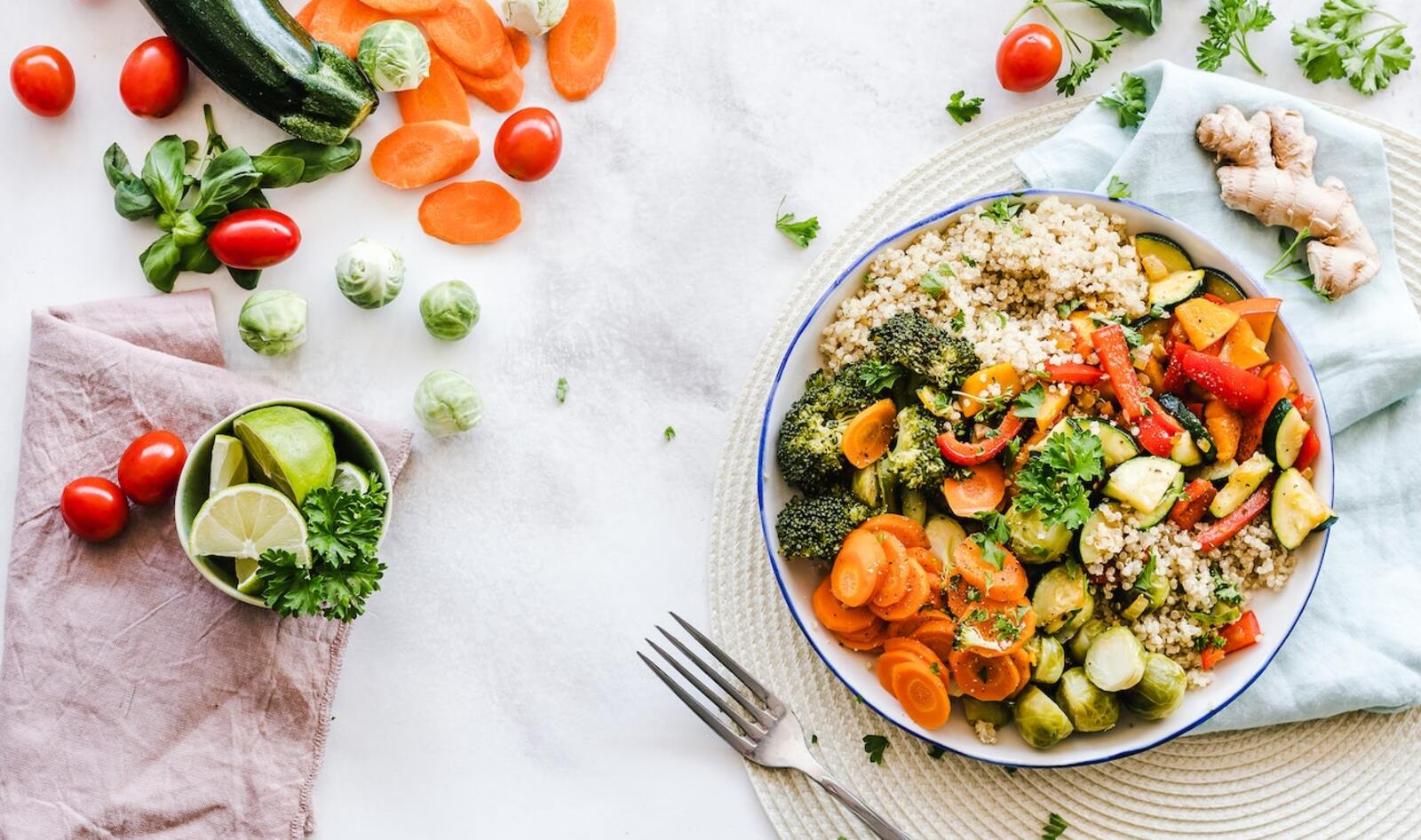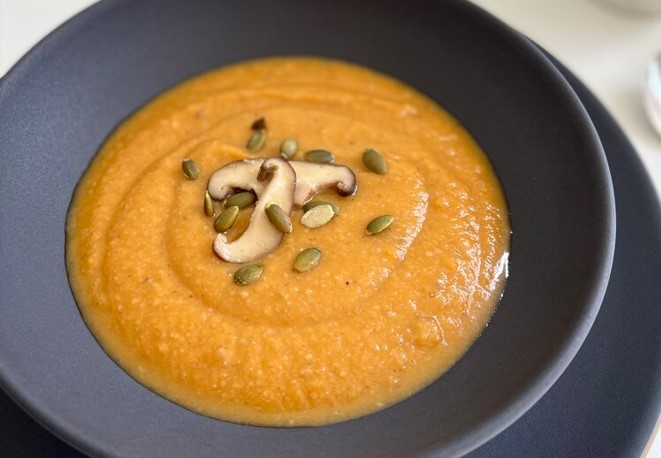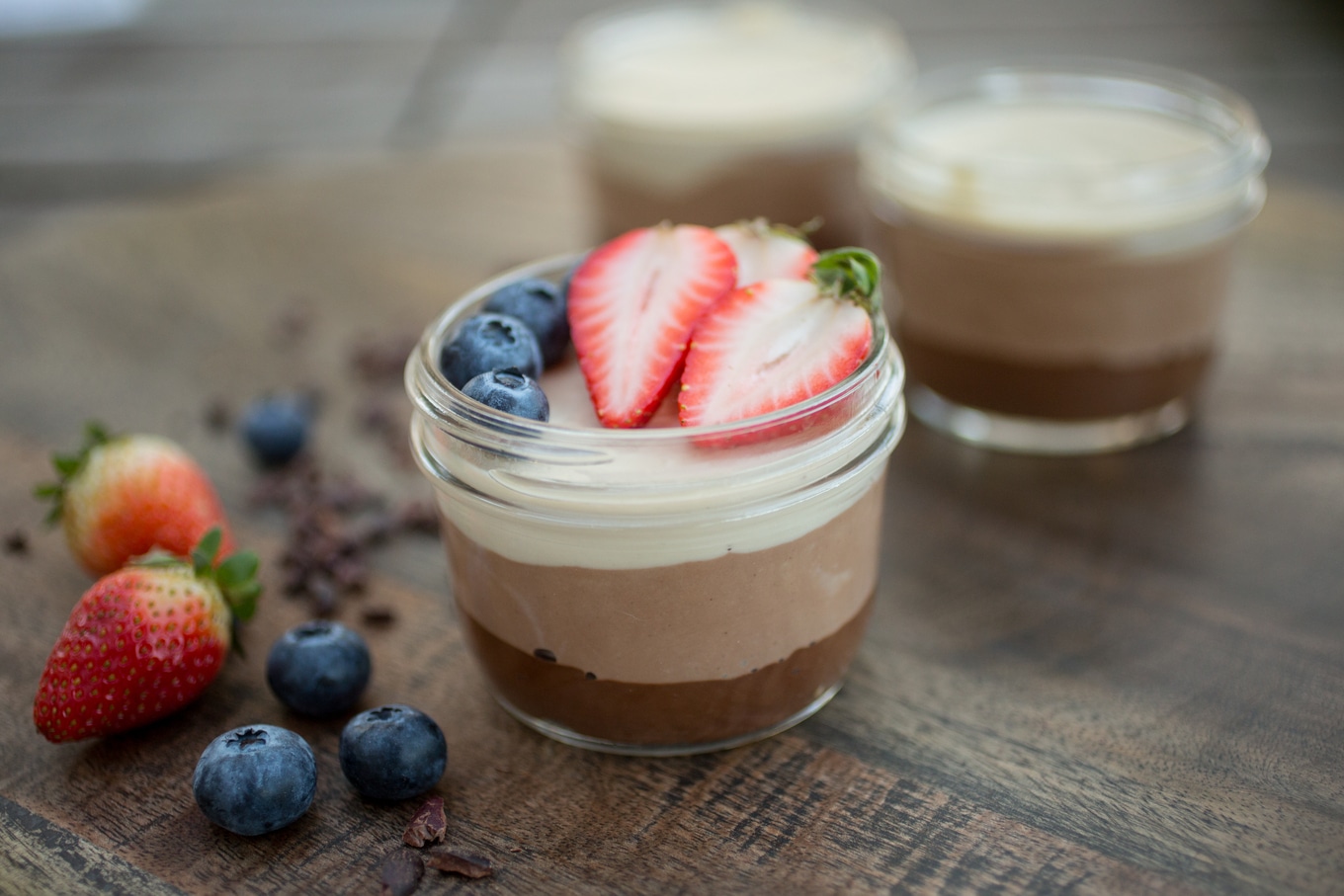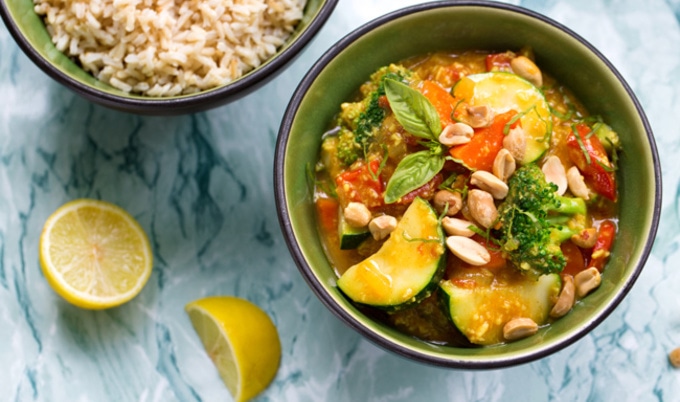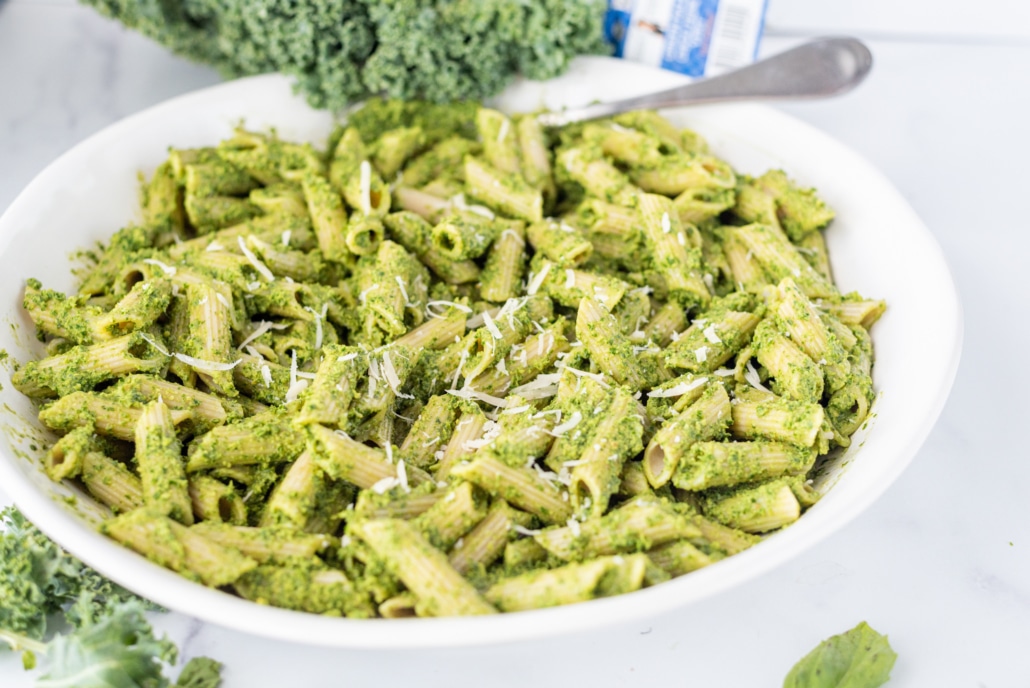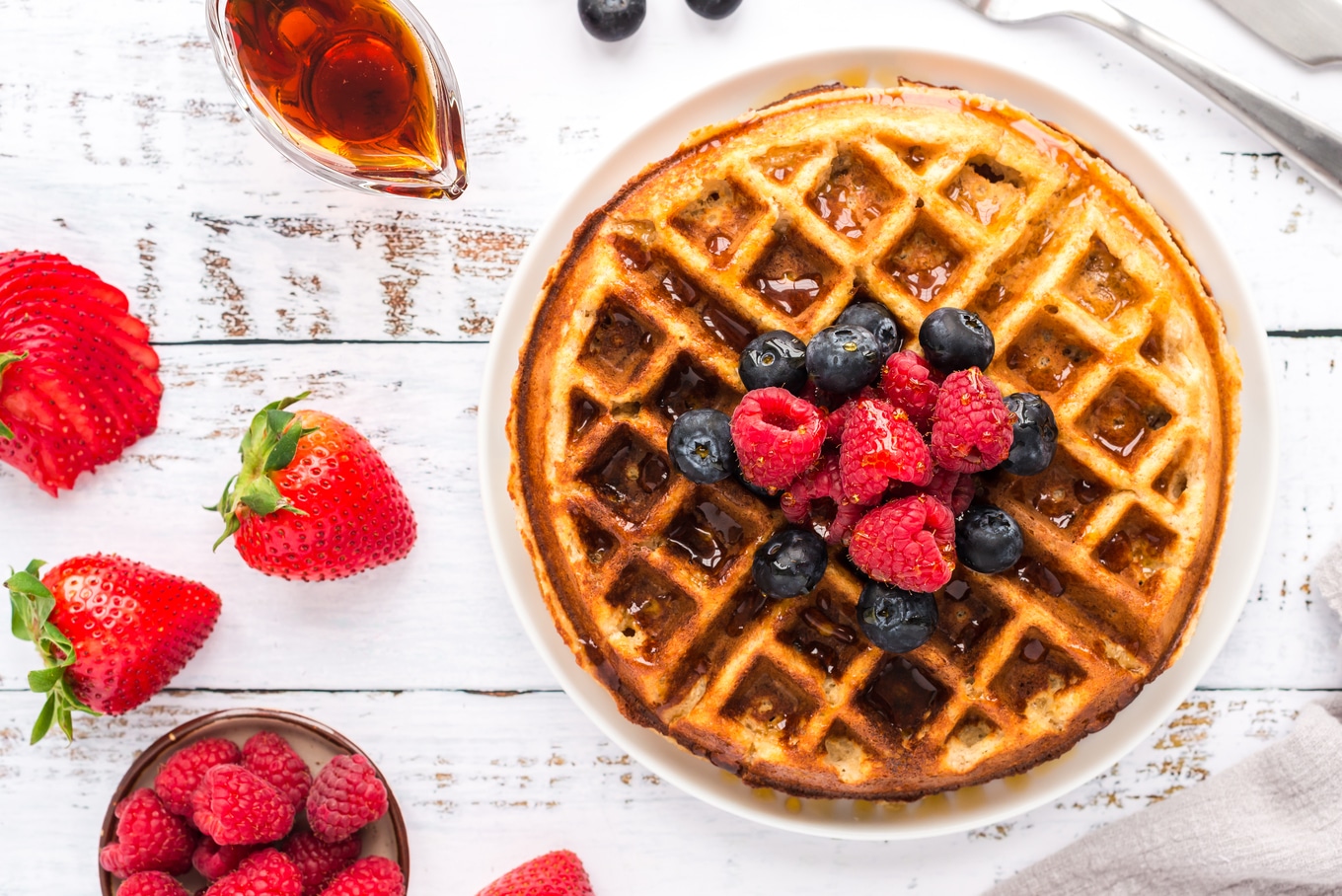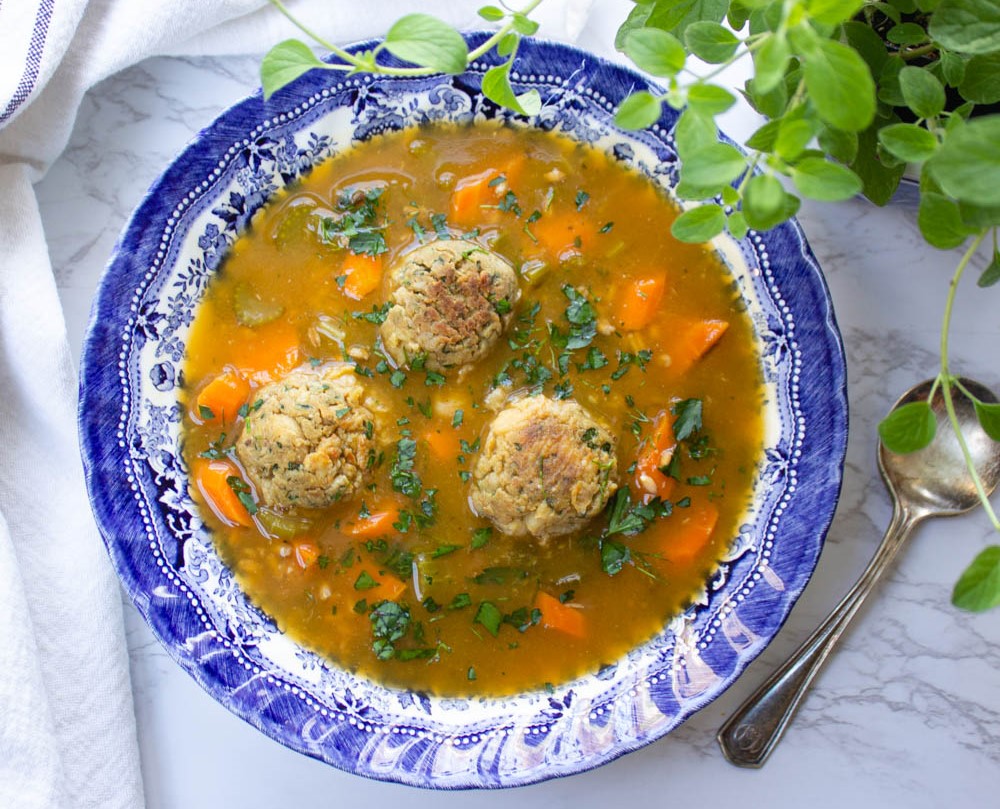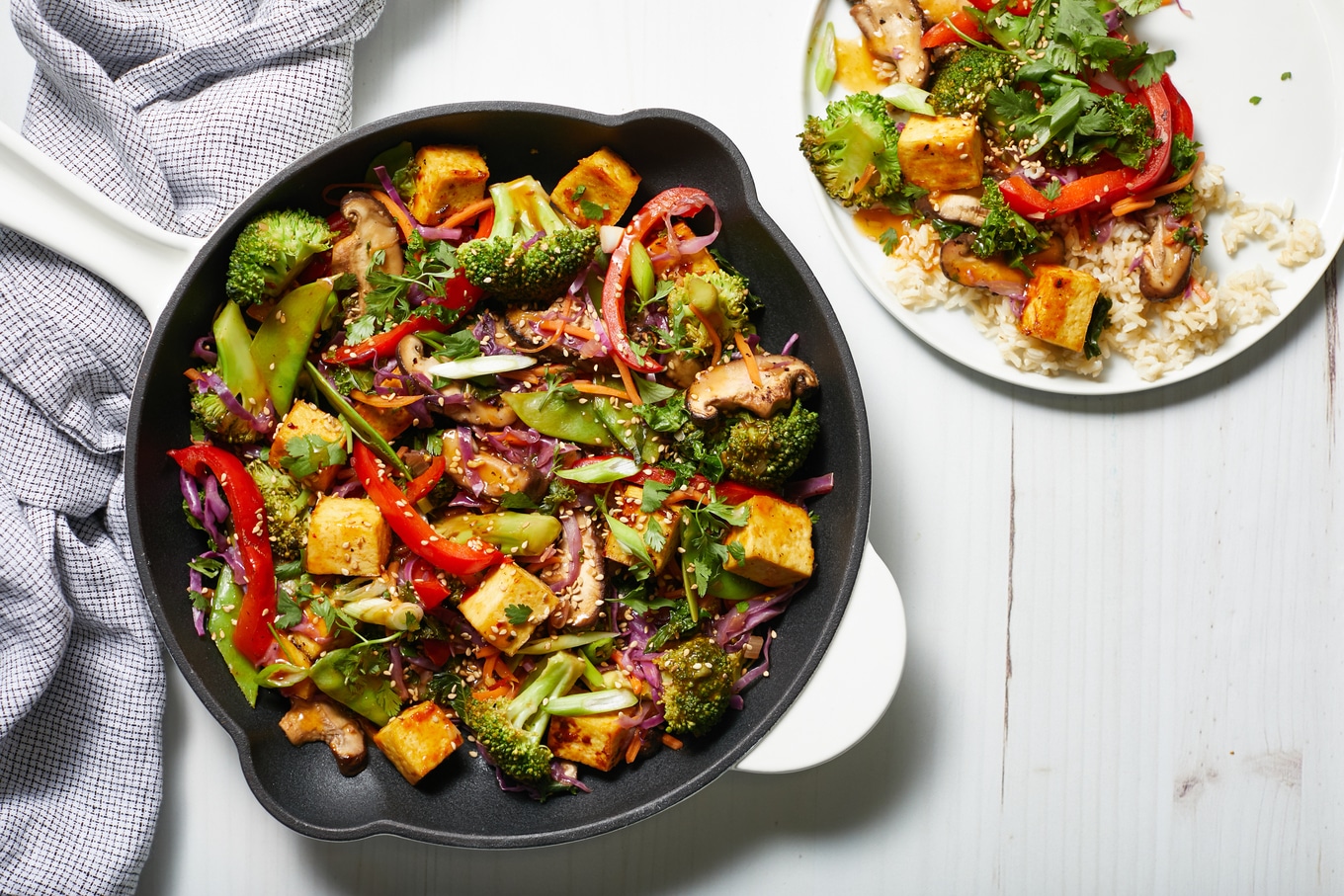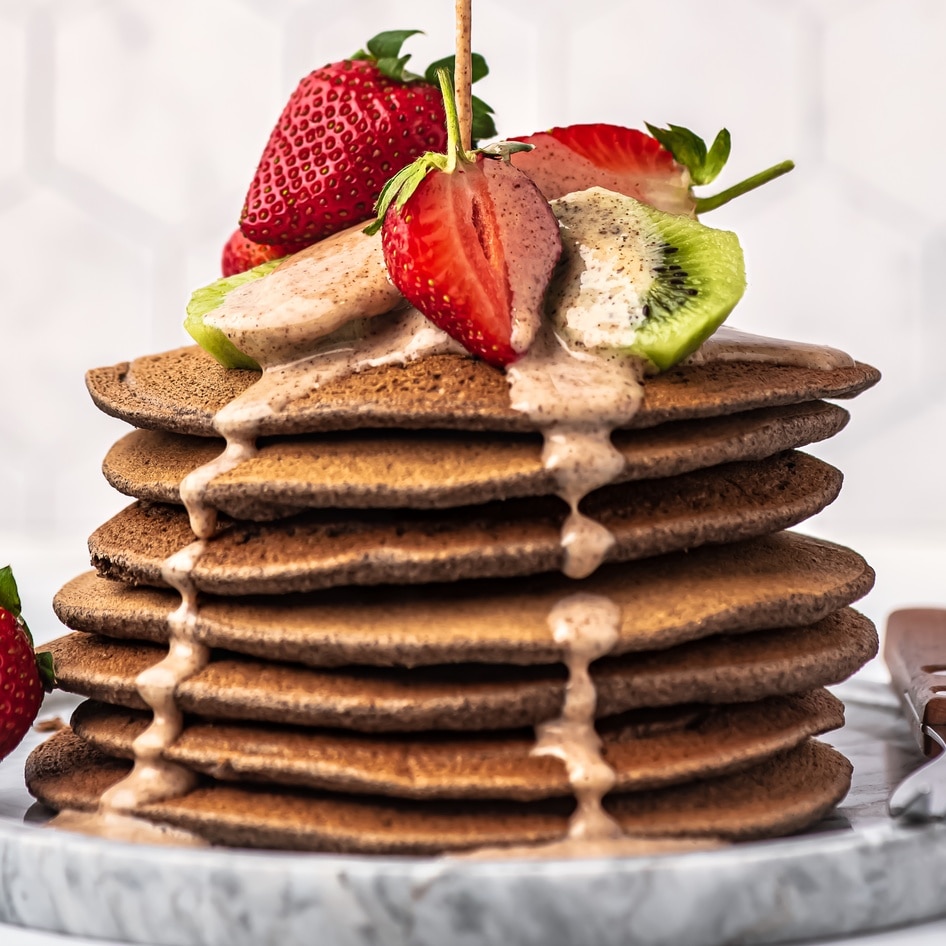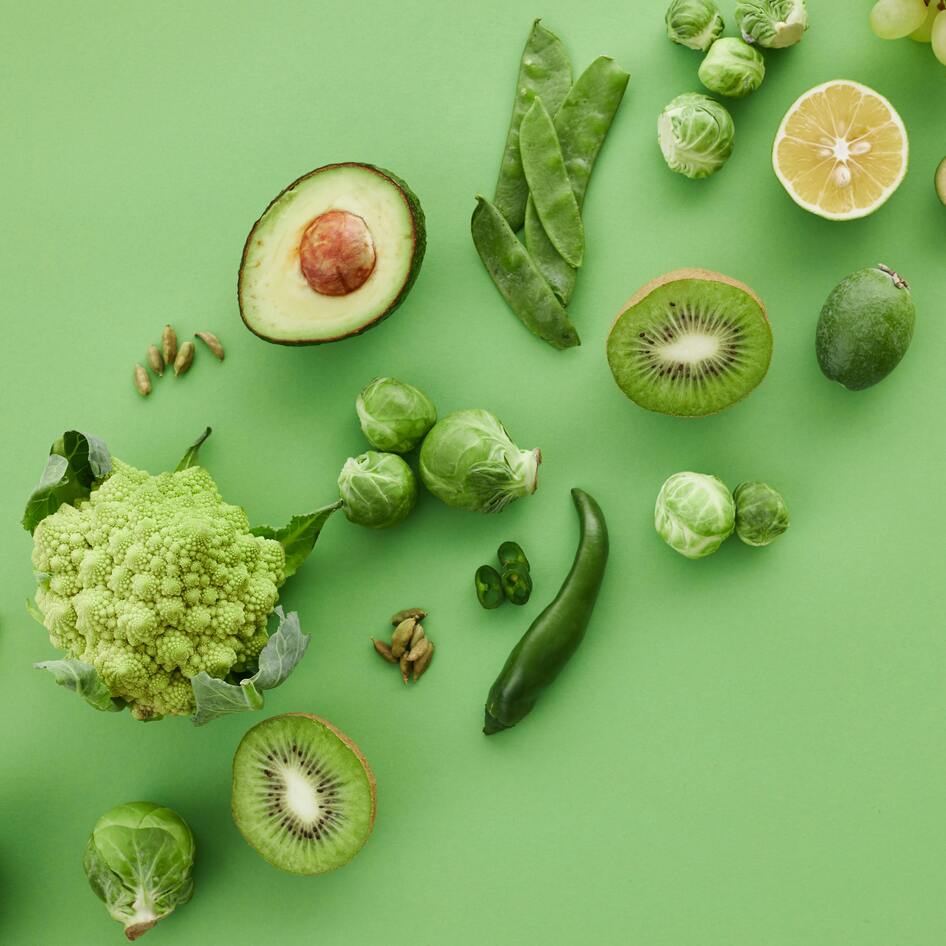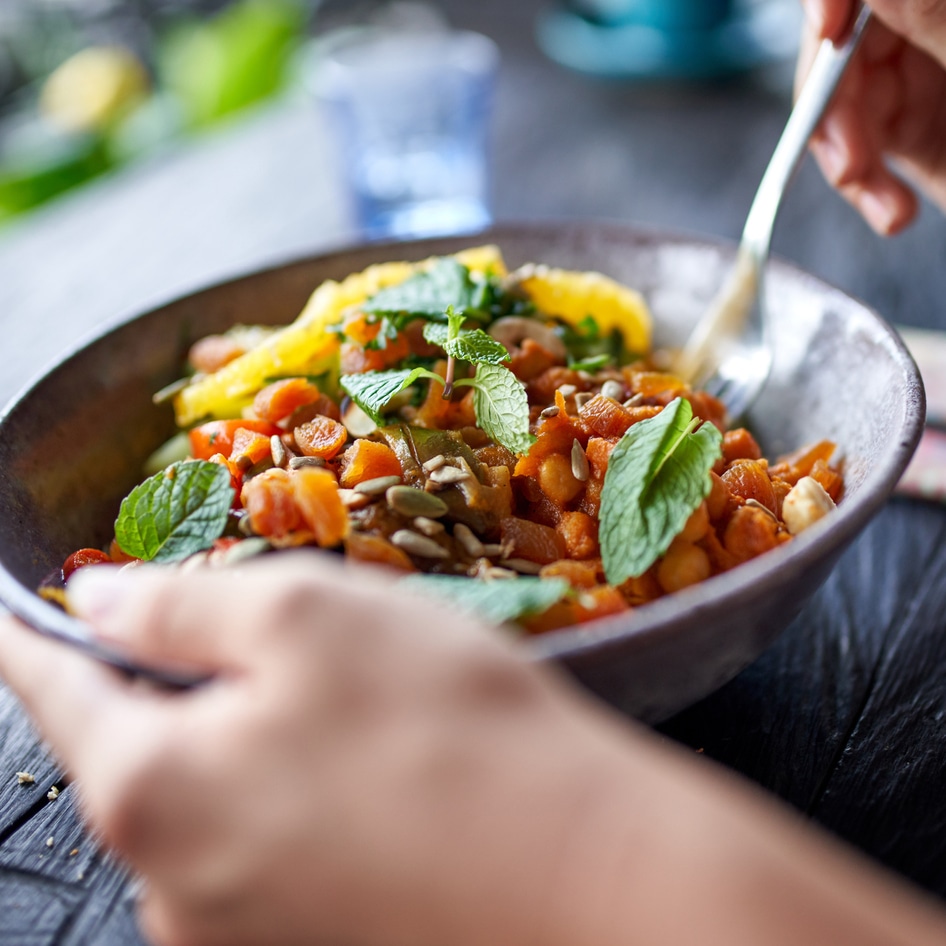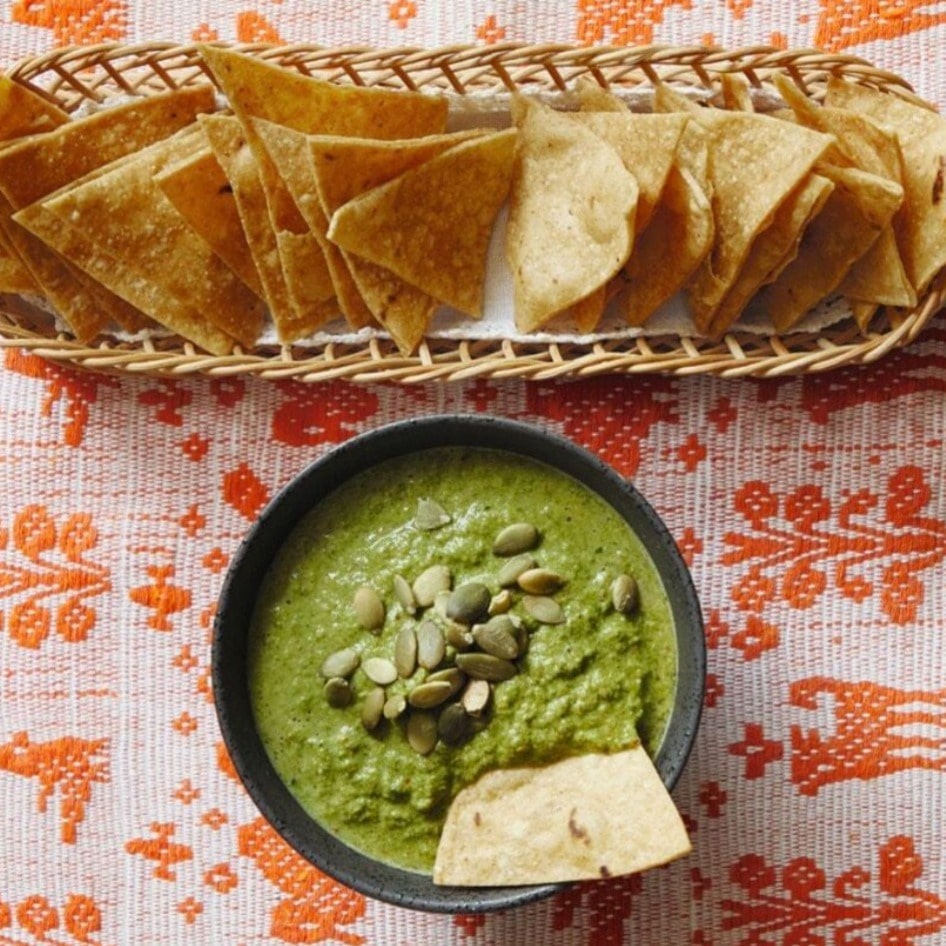Back in 1866, the phrase “Eat an apple on going to bed, and you’ll keep the doctor from earning his bread,” was published in a magazine for the first time. Since then, it has evolved into the more familiar: “An apple a day keeps the doctor away.” And while it may seem oversimplified, the crux of this old saying still stands up today. Essentially, it means: eating nutritious foods will help you remain in good health.
While apples are a good source of fiber, antioxidants, vitamins, and minerals, they are just one example of a nutritious plant-based whole food. Other examples include leafy greens, like spinach and kale; root vegetables like carrots and sweet potatoes; as well as nuts, seeds, beans, legumes, and tofu. All of these foods are nutritious, minimally processed, and examples of what can be eaten on a whole food, plant-based diet, which is also commonly referred to as the WFPB diet.
Here we take a closer look at what the WFPB diet is, its benefits, and some of the nutritious recipes you can enjoy if you choose to give it a try.
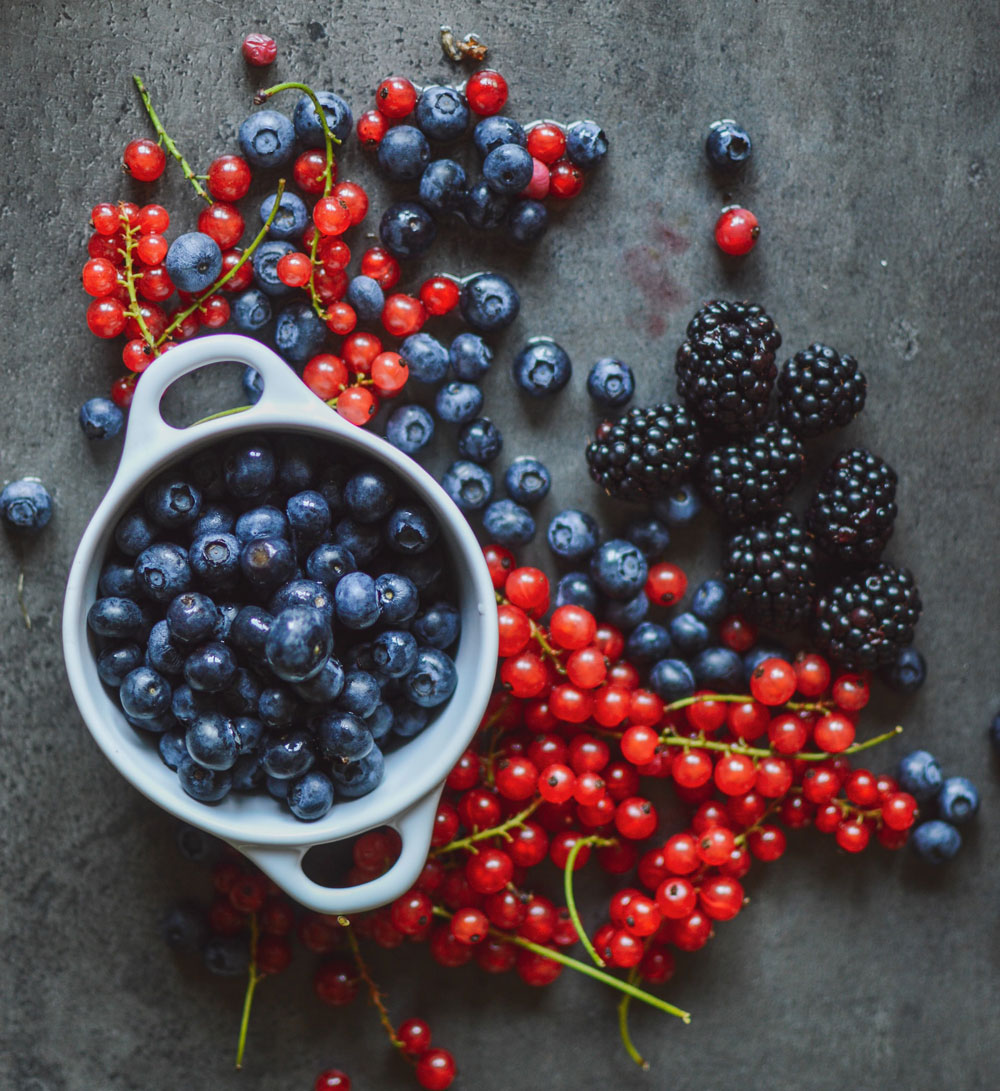 Unsplash
Unsplash
What is a whole food plant-based diet?
While it may sound complicated, a WFPB diet is actually very simple. It follows the principle that a vegan, unprocessed, low-salt, and oil-free diet is good for your body. Essentially, that means keeping processed foods to a minimum and eliminating animal products while filling up your plate with whole foods like vegetables, fruits, legumes, whole grains, and nuts. It’s important to note that ingredients don’t always have to be fresh. Shelf-stable foods, like canned beans, can also be part of a WFPB diet, and they’re often more affordable, too.
Is a whole food plant-based diet different than a vegan diet?
Veganism is a lifestyle that excludes the consumption of animal products as much as possible. For that reason, many vegans choose to follow a WFPB diet, as it does not include any animal ingredients. But that said, not all vegans follow this diet. Many foods, like French fries or Beyond Burgers, for example, are vegan, but as they are processed, they are not examples of whole foods.
In fact, eating a strictly whole-food plant-based diet is actually pretty different from your standard vegan diet. Vegan meat and cheese, bread, ice cream, cookies, candy, snacks, and frozen meals are off the table. But, even without vegan frozen pizza, there’s still a lot to eat on a whole-foods plant-based diet—and it doesn’t need to be bland.
There are about 200,000 edible plant species in the world, but humans consume only around 200. That’s enough to offer a substantial kitchen arsenal of fruit, vegetables, grains, legumes, herbs, spices, and vinegar to cook with.
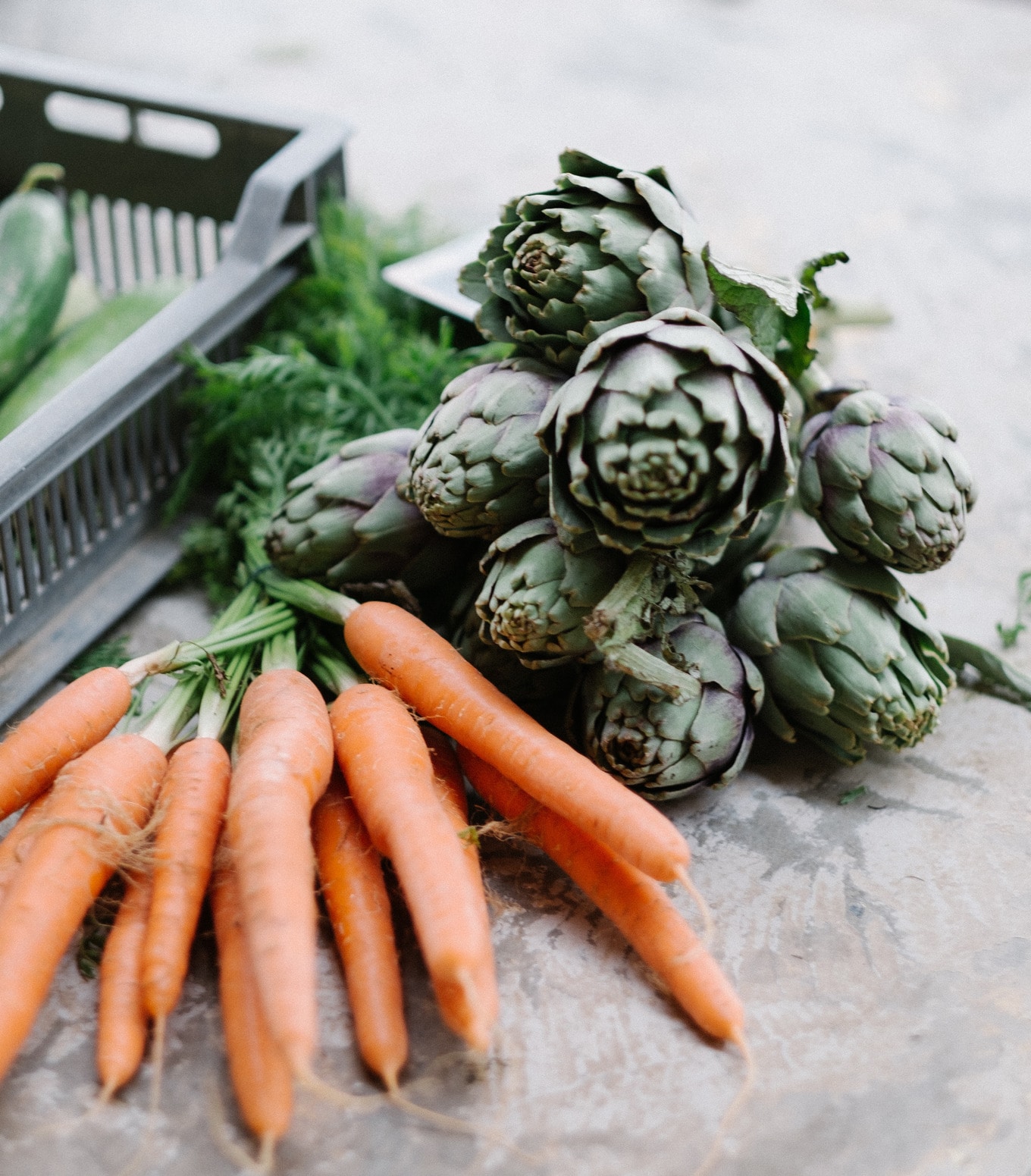 Pexels
Pexels
Whole food, plant-based diet benefits
Given the lack of dairy-free boxed macaroni & cheese, French fries, and candy, it’s safe to say that health is most likely the driving factor for anyone’s interest in going whole-foods plant-based. And with good reason.
A wide body of research confirms that a WFPB diet is one of the healthiest ways to eat. It is associated with a lower risk of a number of chronic diseases and conditions, including heart disease, type 2 diabetes, and different types of cancer.
A key reason why a WFPB diet is healthy is that it is rich in fiber, says registered dietitian Ashley Kitchens, MPH, RD, LDN, who is also the owner of the plant-based platform Plant Centered Nutrition. “Fiber can help regulate blood sugar levels, normalize bowel movements, lower cholesterol levels, and keep your colon healthy,” she explains. “Whole food plant-based eaters consume about three times more fiber than someone following the standard American diet.”
Dima Salhoobi, RD, CDN, MS, who owns Fresh Nutrition Counseling, agrees. She adds that whole food ingredients are a good natural source of vitamins and minerals, which help to keep our bodies nourished and healthy. Antioxidants, for example, like vitamins C and E, help to neutralize free radicals in the body. Research suggests that free radicals are dangerous compounds that may play a role in the development of diseases.
“Disease prevention and healthy living start with simple swaps of ingredients at home,” Salhoobi explains. “It is the simple decisions that we make every day in our life, with regards to what goes in our body, that can be either detrimental to our health or in favor of our health.”
Should you supplement? Studies show that eating plant-based can come with health benefits, but a vegan diet naturally lacks vitamin B12, which helps make DNA and keeps your blood and nerve cells healthy. For what it’s worth, Michael Greger, MD, WFPB advocate and the founder of NutritionFacts.org, recommends supplementing this important vitamin. But as always, you should speak to your physician if you’re planning on drastically changing your diet.
Nutrition aside, because it avoids animal products, a WFPB diet also has environmental benefits. Animal agriculture (particularly because of cattle farming and the animal feed industry) is a leading cause of deforestation and wildlife habitat destruction, for example. The entire livestock sector also emits 14.5 percent of global greenhouse gasses and pollutes waterways, which impacts communities and underwater ecosystems. Plus, it harms billions of animals, most of which spend the majority of their lives in cramped, dirty, industrial factory farm conditions.
This is why, for many, a WFPB diet is not just a diet, but also a conscious lifestyle choice, which helps to minimize harm to the planet and other animals.
What can you eat on a whole food, plant-based diet?
While a WFPB restricts certain foods, it is far from limited. In fact, it includes a wide range of ingredients that are delicious, nutritious, and versatile, too. Here are just a few key examples of the types of foods you can eat on a WFPB diet.
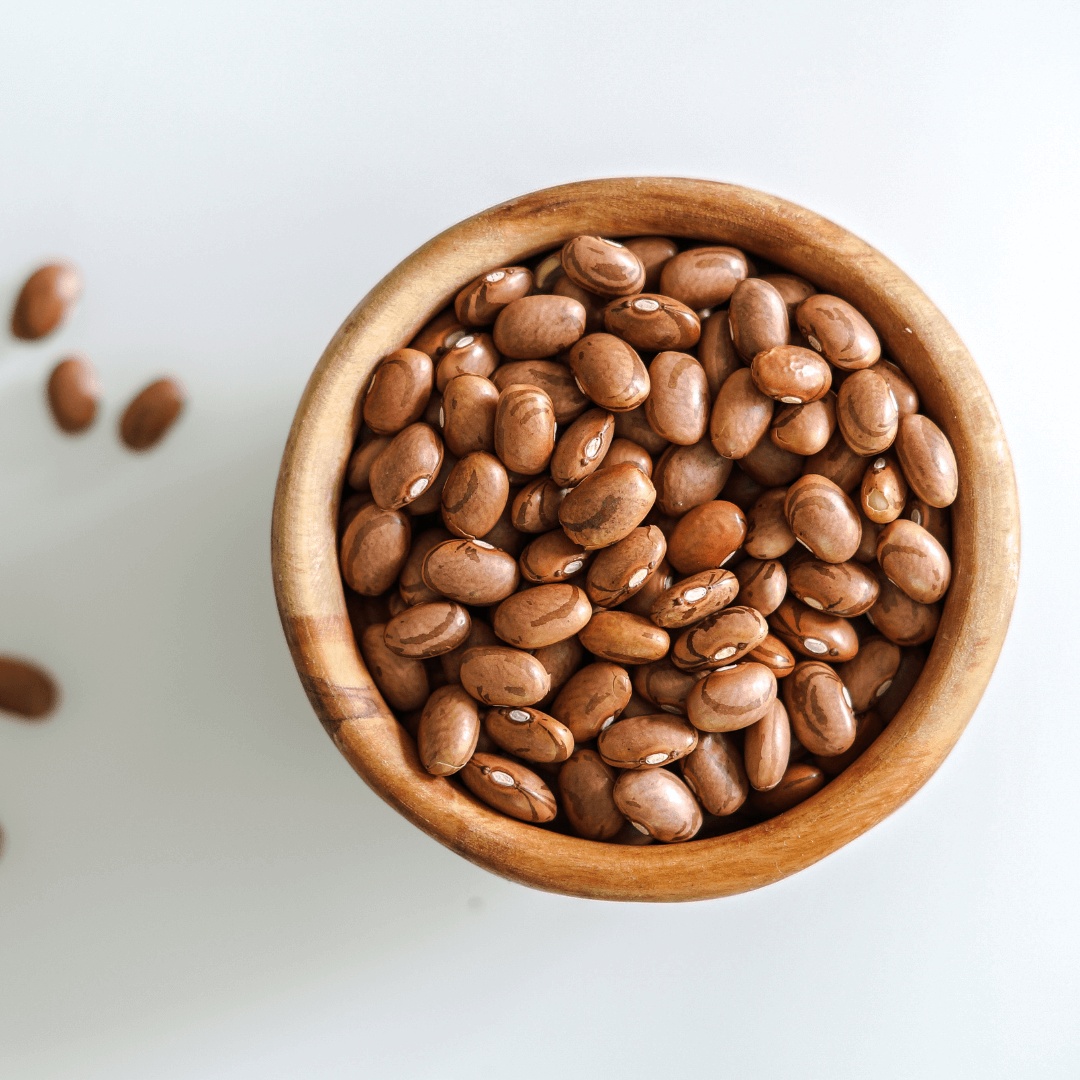 Canva
Canva
1 Beans and legumes
Beans and legumes, like kidney beans, chickpeas, lentils, peas, and black beans, are a good source of protein, as well as fiber, calcium, zinc, and B vitamins. They’re also filling, low in fat, and incredibly versatile. Take the simple chickpea, for example. This ingredient can be enjoyed on its own, roasted, smashed into hummus, or mixed together with a bit of seaweed to create tasty chickpea tuna. The options are endless.
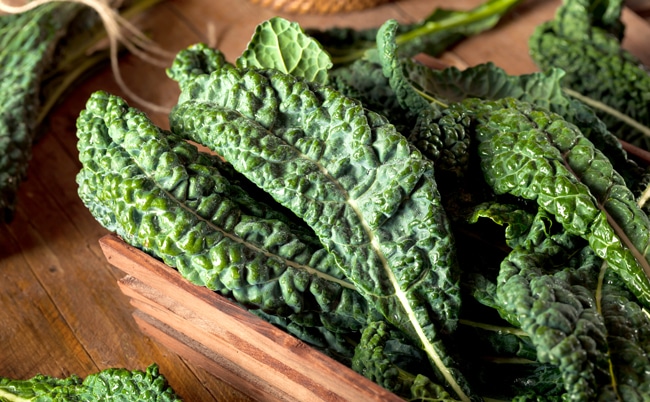 Getty Images
Getty Images
2 Leafy greens
Spinach, kale, bok choy, cabbage, and collard greens are just a few examples of the types of leafy greens you can enjoy on a WFPB diet. They are good sources of calcium, as well as vitamin K, vitamin C, vitamin A, and folate. Leafy greens can form the basis of a number of WFPB dishes, including delicious salads and stir-fries. Take this vegan soup recipe, for example, which calls on bok choy as a star ingredient.
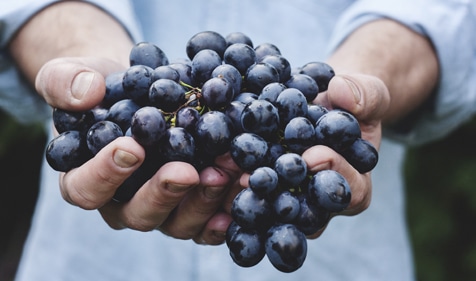 Unsplash
Unsplash
3 Fruit
From berries to citrus, fruits are loaded with antioxidants, vitamins, and dietary fiber, and are an important and nutritious addition to a WFPB diet. It’s important to point out here though that store-bought fruit juices are not considered whole foods, and that’s because they have been processed. Plus, they are also usually high in sugar, too. However, you can still enjoy fruits in liquid form. Homemade smoothie recipes, for example, often use whole food ingredients, like this vegan blueberry smoothie jar.
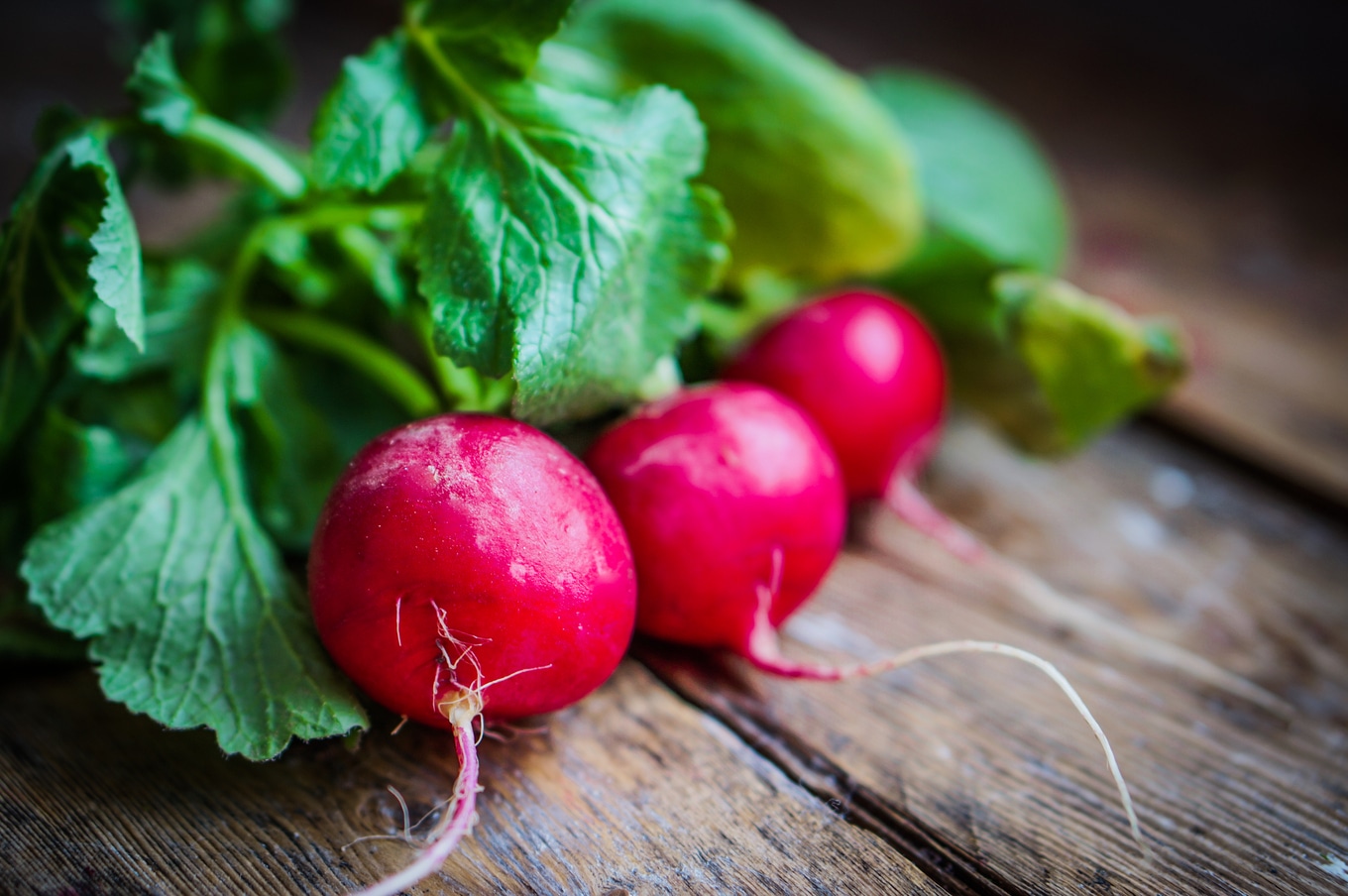 Getty Images
Getty Images
4 Root vegetables
Like many other examples on this list, root vegetables—like carrots, radish, beetroot, and sweet potato—are packed with vitamins, fiber, and antioxidants (like carotenoids) which help to maintain immune system function and eye health. From sweet to savory, root vegetables can form the basis of many WFPB recipes, including the classic, sweet potato pie.
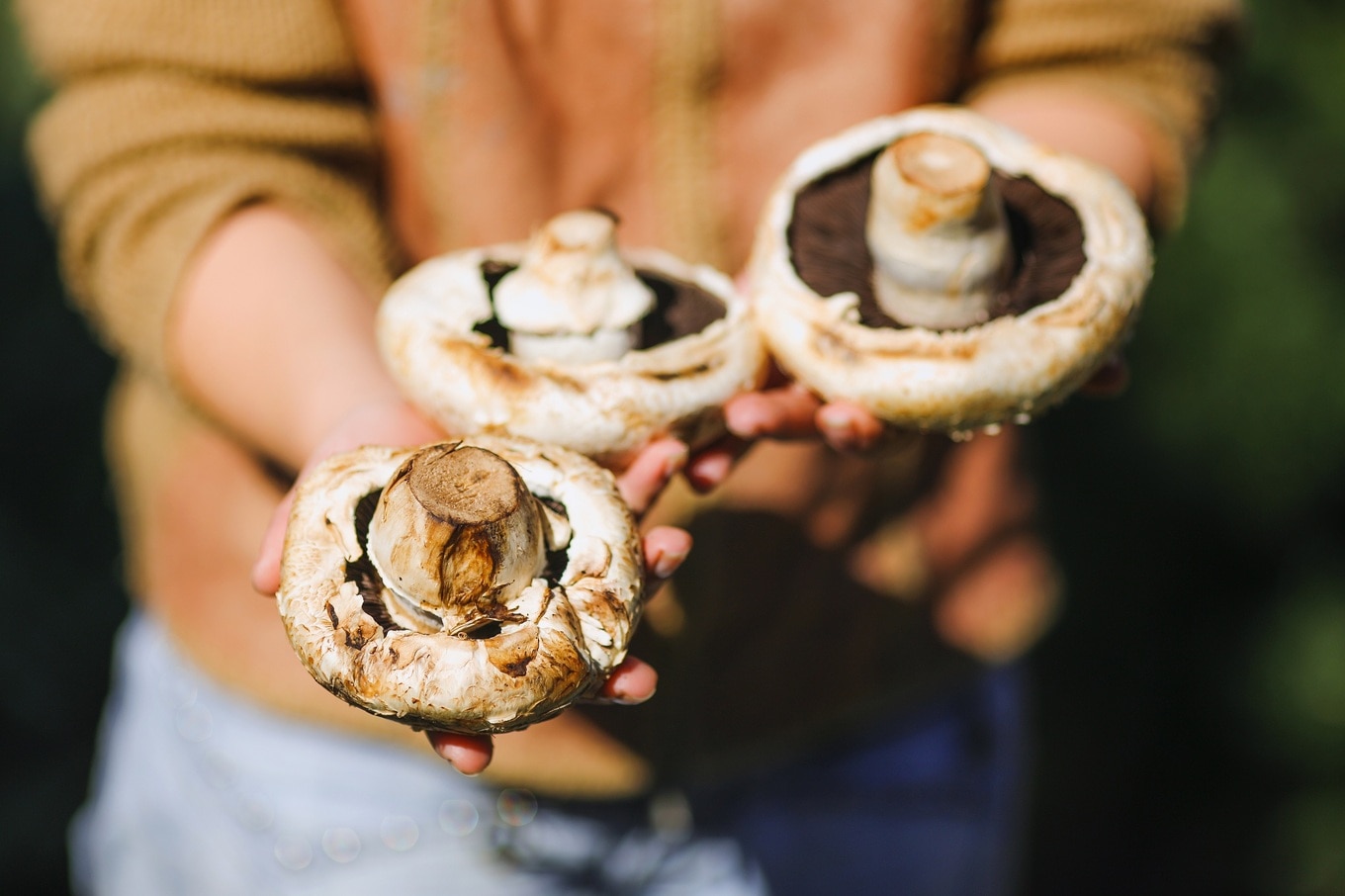 Unpslash
Unpslash
6 Mushrooms
For those who love a meaty texture, mushrooms—especially king oysters, shiitake, and portabello varieties—are a great WFPB alternative to animal products. They can be swapped into dishes like tacos, stir-fries, and whole-grain risotto in order to get that meaty taste and mouthfeel. Plus, they’re nutritious, as they’re rich in B vitamins like riboflavin, niacin, and pantothenic acid, as well as fiber, potassium, and vitamin C.
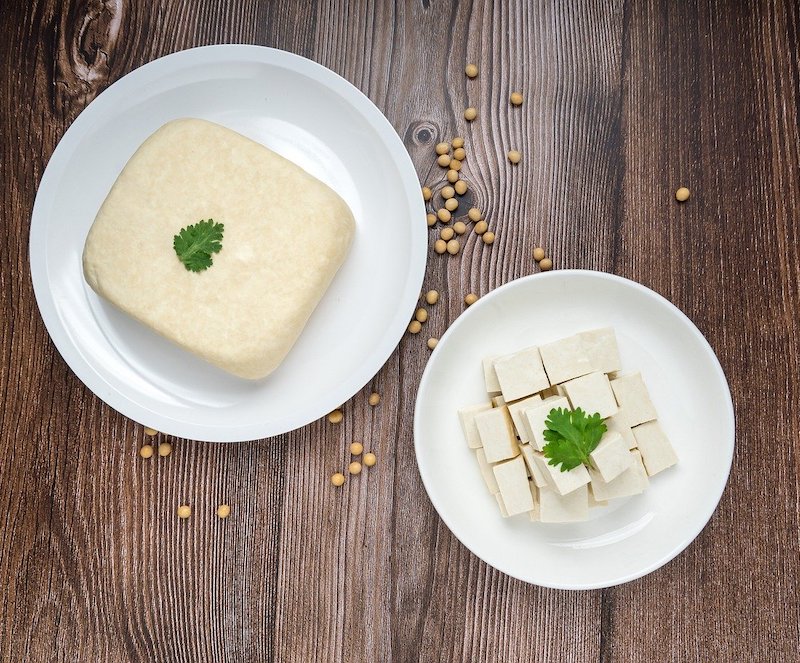 Unsplash
Unsplash
7 Tofu and tempeh
Tofu and tempeh are also nutritious alternatives to meat. Both are derived from soy and packed with protein. Per 100 grams, tempeh contains roughly 19 grams of protein, for example, and tofu contains around 8 grams. While tempeh and tofu are processed, it is only a minimal amount, so many people who follow a WFPB diet still choose to enjoy them.
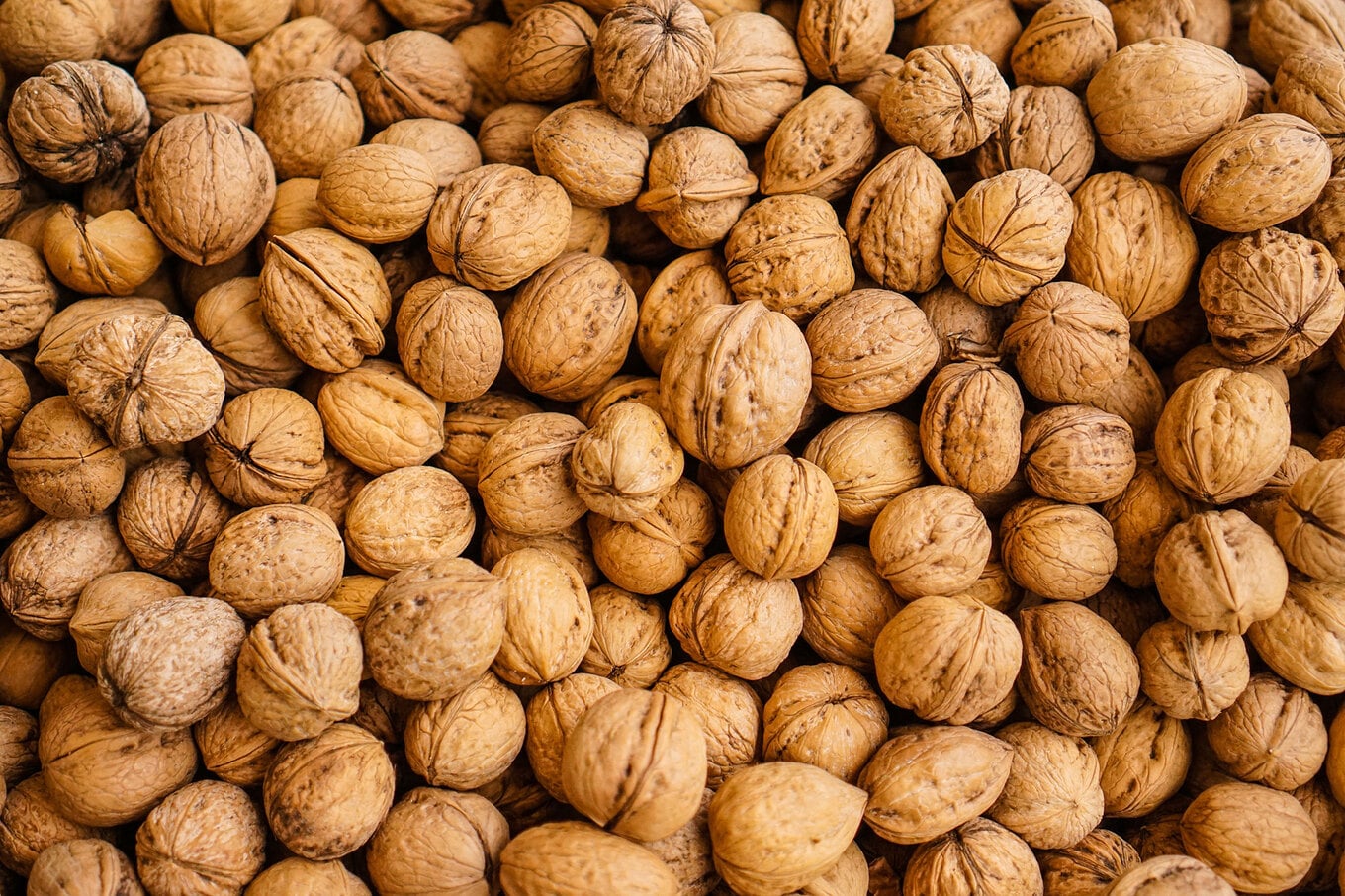 Unsplash
Unsplash
8 Nuts, seeds, and grains
Nuts, seeds, and grains are also sources of protein on a WFPB diet. Whole grains, like oats, for example, are also rich in vitamin E and fiber, and research suggests they can also lower cholesterol levels, too. Likewise, seeds, like chia and flax, and nuts, like walnuts, contain fiber. Plus, they’re a great source of healthy fats, like omega 3, which help to support heart health. In fact, just 10 whole walnuts contain nearly 2 grams of omega 3.
Other foods you can enjoy on a WFPB diet include:
- Certain condiments: Soy sauce, vinegar, nutritional yeast, mustard, salsa.
- Drinks: Coffee, tea, kombucha, sugar-free sparkling drinks.
- Fresh or dry chili peppers: Poblano, guajillo, jalapeño, Aleppo, bird’s eye, serrano, Scotch bonnet.
- Fresh or dry herbs and spices: Parsley, sage, rosemary, thyme, turmeric, cilantro, gochugaru, basil, ginger.
- Nut and seed butters: Homemade or single-ingredient (watch for added sugar and oil).
- Unprocessed sweeteners: Date syrup, maple syrup, blackstrap molasses (in moderation).
- Unsweetened plant-based milk: Look for milk made without gums or fillers, like Elmhurst 1925, or DIY it.
- Vegan cheese: Look for oil-free cheeses made from nuts or seeds.
- Whole grain bread and tortillas: In moderation.
- Whole grain pasta or noodles: Soba, brown rice noodles, sweet potato noodles, and these pastas.
What’s not allowed on a whole-foods plant-based diet?
In addition to the list below, keep in mind the most important rules of WFPB diets: no oil, low amounts of salt, no processed sugar, and no processed grains.
- Dairy products: Milk, yogurt, ice cream, cheese, kefir, and more.
- Drinks: Soda and soft drinks, alcohol, processed juice.
- Eggs: Make oil-free tofu scrambles and use ground flaxseed for baking.
- Meat and fish: But you probably knew that already.
- Oil: Sauté with vegetable broth instead.
- Packaged foods: Most ready-made meals, chips, puffs, candies, and cereals are not whole-foods plant-based due to the addition of oil, salt, and sugar.
- Processed sugar and sweeteners: White sugar, brown sugar, pancake syrup.
- Processed vegan meats and cheeses: Oil and salt are out.
- Salt: Salt of any kind is not really encouraged, but small amounts are okay.
- Vegan ice cream: With few exceptions, dairy-free ice cream contains oil and processed sugar.
- White grains, pasta, tortillas, and bread: This includes rice, too.
What are some whole food, plant-based recipes
Cooking on a WFPB diet can be as easy or as creative and complicated as you want it to be. And whatever your preference, whether you’re a curry connoisseur or you’ve got a super sweet tooth, you’ll be able to find a wealth of recipes for you. To get you started, here are just a handful of examples of the types of dishes you can enjoy.
This all being said, a whole-foods plant-based diet can be more time-consuming, so don’t feel guilty if it’s not something that you can commit to 24/7. We get it. Some of the foods mentioned, like white bread and pasta, are cheaper than the whole, plant-based option. Preparing meals from scratch takes time that not everyone has. And sometimes, you just crave certain foods (this is especially true about ourselves and craving vegan pizza). Keeping whole-foods plant-based recipes in your rotation might just be the right kind of balance for you.
1 Shiitake Mushroom and Butternut Squash Soup
Colder weather calls for a hearty savory soup, and this recipe will not disappoint. The blend of shiitake mushrooms, garlic, and butternut squash will not only warm up your insides but also treat them to a burst of vitamins and minerals. Plus, it’s simple to make and relatively quick, too.
Get the recipe
2 Avocado Chocolate Mousse
Yep, you read that right—you can indulge in chocolate mousse on a WFPB diet. In fact, it’s just one of many sweet treats that can be made with only plant-based ingredients. You can barely taste the avocado, but it does help to create a deliciously creamy and indulgent texture.
Get the recipe
3 Thai Vegetable Curry
If you thought you’d have to sacrifice your favorite recipes on a WFPB diet, you’ll be thrilled to know that’s not the case. With just a few simple tweaks, a number of much-loved dishes, like this creamy Thai vegetable curry, can be made with only whole food ingredients.
Get the recipe
4Oil-Free Vegan Kale Pesto Pasta
This pesto is dairy- and oil-free. To make it WFPB, use whole wheat, legume-based, and other types of grain-based flours. Essentially, anything that isn’t regular white pasta, which is usually made from durum wheat semolina, is okay in moderation. This is good because we couldn’t imagine a life without pasta.
GET THE RECIPE
5Vegan and Gluten-Free Waffles
Most waffle recipes, vegan or not, call for oil and sugar. But this waffle recipe uses fresh banana and dairy-free yogurt. Instead of enriched flour, it’s made from a blend of oat flour and almond meal. It’s different from your usual waffle, but no less adept at holding maple syrup. For vegan yogurt, use homemade or look for store-bought options that don’t contain added sugar or filler ingredients, like gums, which are not whole-foods plant-based.
GET THE RECIPE
6Vegan Italian Wedding Soup
This is a soup we’d eat anytime, not just at Italian nuptials, thanks to its generous use of fresh herbs, lemon juice, and lemon zest. The meatballs are made from cannellini beans, ground spices, and breadcrumbs. Make sure to use whole wheat breadcrumbs that are free from salt and oil or make your own using day-old whole wheat bread.
GET THE RECIPE
7Oil-Free Sweet Chili Tofu Stir-Fry
This sweet and spicy tofu recipe is oil-free but calls for a sweet chili sauce called “nam chim kai” in Thailand. The bottled kind is usually made with sugar, but if you omit the sesame oil from the sauce recipe here, then you’re in the clear. It’s also packed with a rainbow of vegetables: purple cabbage, red bell peppers, broccoli, carrots, and more. Serve it with cauliflower rice or brown rice and top it with scallions, fresh cilantro, and sesame seeds.
GET THE RECIPE
8Vegan Kaju Katli Kulfi
This frozen treat from Shivangi Rao’s Mindful Indian Meals cookbook is the lovechild of two desserts. Kaju katli, a North Indian fudgy sweet made with cashews and sugar, and kulfi, a frozen dessert made from full-fat milk, sugar, cardamom, and saffron that also hails from northern India. This decadent pop tastes like the best of both worlds. A word of caution: the recipe is sweetened with maple syrup, so this is an every-once-in-a-while treat if you’re aiming to be strictly whole-foods plant-based.
GET THE RECIPE
For more diet-focused guides, read:
JUMP TO ... Latest News | Recipes | Guides | Health | Subscribe

